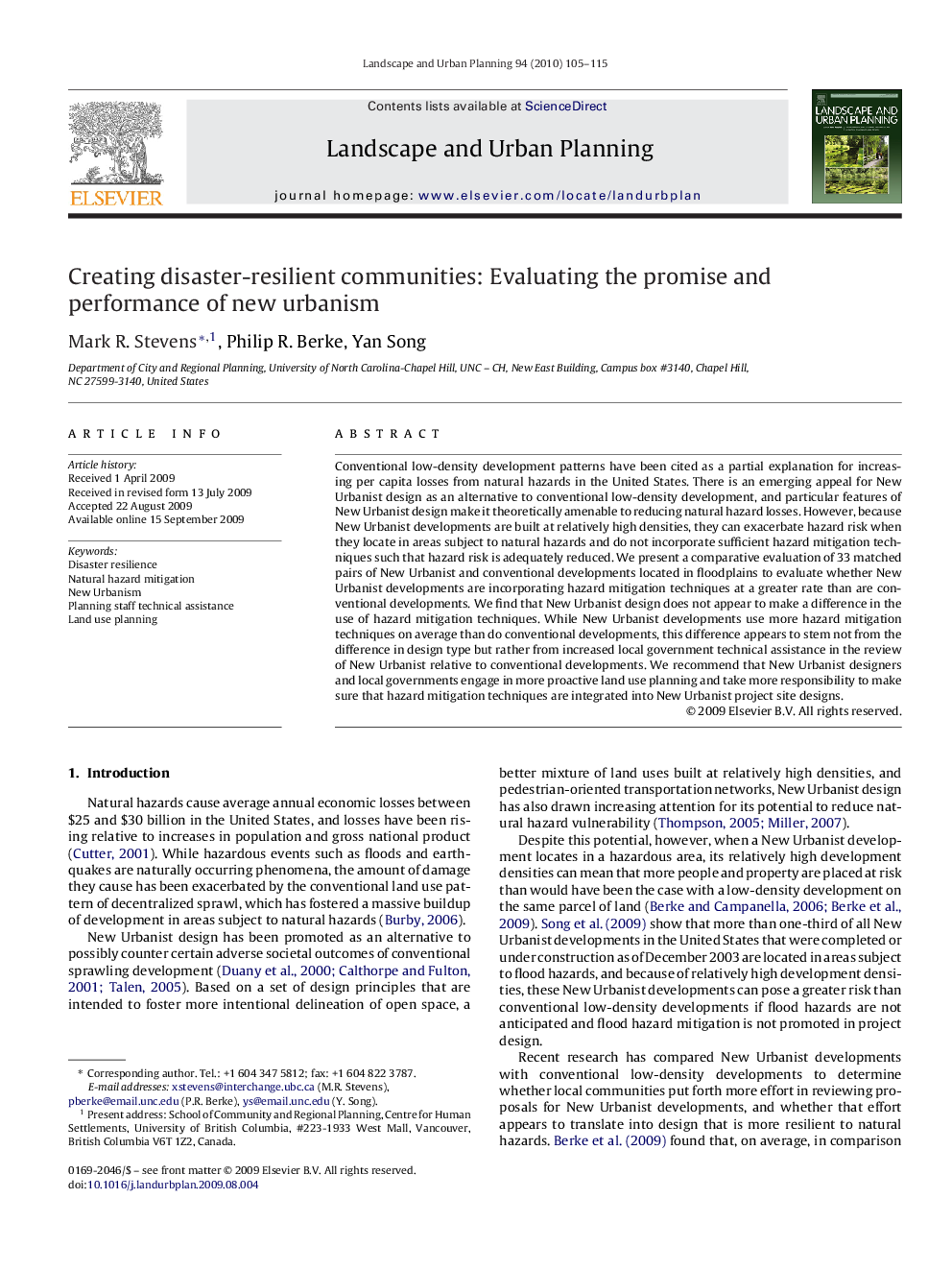| Article ID | Journal | Published Year | Pages | File Type |
|---|---|---|---|---|
| 1050044 | Landscape and Urban Planning | 2010 | 11 Pages |
Conventional low-density development patterns have been cited as a partial explanation for increasing per capita losses from natural hazards in the United States. There is an emerging appeal for New Urbanist design as an alternative to conventional low-density development, and particular features of New Urbanist design make it theoretically amenable to reducing natural hazard losses. However, because New Urbanist developments are built at relatively high densities, they can exacerbate hazard risk when they locate in areas subject to natural hazards and do not incorporate sufficient hazard mitigation techniques such that hazard risk is adequately reduced. We present a comparative evaluation of 33 matched pairs of New Urbanist and conventional developments located in floodplains to evaluate whether New Urbanist developments are incorporating hazard mitigation techniques at a greater rate than are conventional developments. We find that New Urbanist design does not appear to make a difference in the use of hazard mitigation techniques. While New Urbanist developments use more hazard mitigation techniques on average than do conventional developments, this difference appears to stem not from the difference in design type but rather from increased local government technical assistance in the review of New Urbanist relative to conventional developments. We recommend that New Urbanist designers and local governments engage in more proactive land use planning and take more responsibility to make sure that hazard mitigation techniques are integrated into New Urbanist project site designs.
